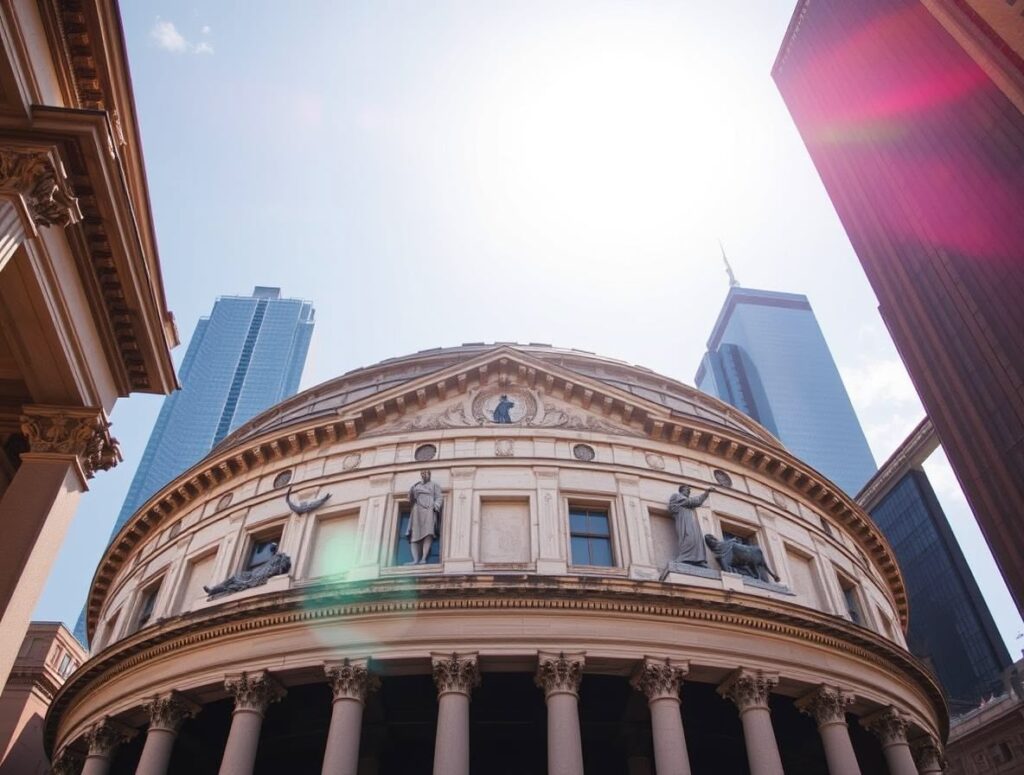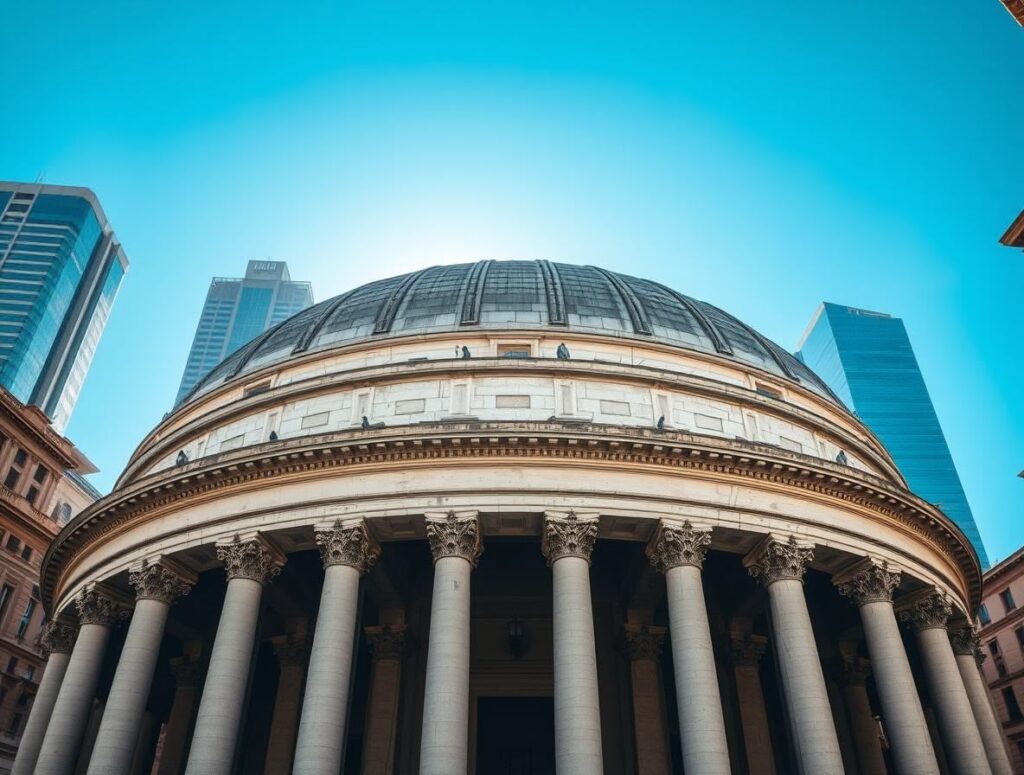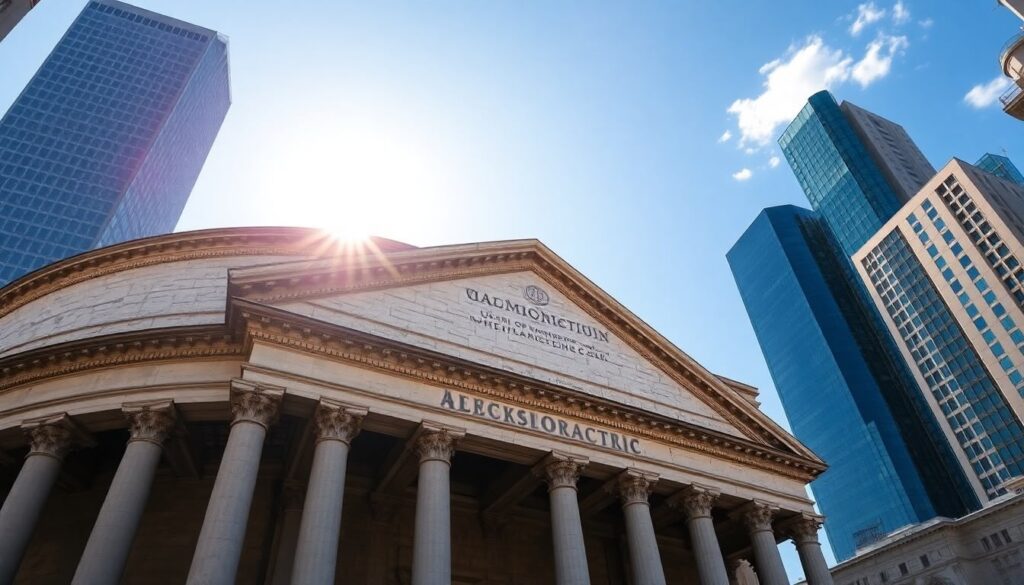The Pantheon stands in defiant contradiction to everything we believe about technological progress. Its massive unreinforced concrete dome—still the world’s largest—has weathered nearly two millennia of earthquakes, wars, and environmental assault. Meanwhile, across modern cities, concrete structures built just 50 years ago already show critical signs of deterioration. This architectural anomaly represents one of history’s most baffling engineering paradoxes: how did ancient Romans create concrete that outperforms our most advanced modern formulations?
The answer lies buried in a scientific mystery that modern engineers have only recently begun to unravel—one that challenges our assumption that newer always means better. Roman concrete isn’t just older than modern formulations; in crucial ways that matter to our future, it’s superior.
When engineers analyzed samples from Roman harbors that have survived 2,000 years of constant battering by seawater—conditions that would destroy modern marine concrete within decades—they discovered something remarkable. The concrete hadn’t merely survived; it had grown stronger. While our buildings are designed with planned obsolescence, Roman structures were built with what can only be described as planned permanence—a fundamental difference in engineering philosophy that has profound implications for how we build our world.
The Forgotten Formula That Outlasted Empires
Roman concrete (opus caementicium) differs fundamentally from modern Portland cement concrete in both composition and curing process. Modern concrete relies primarily on Portland cement—a mixture of limestone and clay heated to extreme temperatures—mixed with aggregate and water. This energy-intensive process creates a material that begins deteriorating almost immediately after setting.
The Romans took a different approach. Their concrete combined lime with a volcanic ash called pozzolana, primarily sourced from the region of Pozzuoli near Naples. When mixed with water, these materials undergo a remarkable chemical reaction that continues to strengthen the concrete over centuries rather than weeks. This “pozzolanic reaction” creates a fundamentally different internal structure—one that actually benefits from exposure to elements that typically destroy modern concrete.
Most fascinating is what happens at the microscopic level. In modern concrete, cracks form pathways for water to penetrate and accelerate deterioration. In Roman concrete, however, researchers have discovered that the material develops microscopic mineral growths over time that actually seal developing cracks. It’s a self-healing mechanism engineered nearly two millennia before the term “self-healing materials” entered scientific literature.

The Pantheon Paradox: Engineering That Defies Modern Understanding
Perhaps no structure better exemplifies the extraordinary qualities of Roman concrete than the Pantheon. Completed around 126 CE during Emperor Hadrian’s reign, its 142-foot unreinforced concrete dome remains an engineering marvel that would challenge builders even with today’s technology.
The dome’s design incorporates several ingenious features. Its thickness gradually decreases from about 21 feet at the base to just 4 feet at the oculus (the central opening), reducing weight while maintaining structural integrity. The concrete itself was carefully layered, with heavier aggregate at the bottom and lighter materials like pumice near the top. This graduated density distribution created a structure that works in perfect compression.
What’s truly remarkable is that the Romans achieved this architectural wonder without the mathematical theories we rely on today. They had no finite element analysis, no computer modeling, and no modern understanding of tensile and compressive forces. They worked from empirical knowledge refined through generations of builders—knowledge that was subsequently lost for over a millennium.
The Pantheon stands as a humbling reminder that technological progress isn’t always linear. In some cases, we’ve moved backward, not forward—a realization that has modern engineers reassessing fundamental assumptions about construction materials.
Seawater: Destroyer of Modern Concrete, Strengthener of Roman Harbors
The most counterintuitive aspect of Roman concrete technology appears in marine structures. Modern seawater construction represents one of civil engineering’s greatest challenges. The combination of mechanical force from waves and chemical attack from salt rapidly degrades modern concrete, typically giving marine structures a functional lifespan measured in decades despite our best engineering efforts.
Roman harbor installations at Caesarea, Baiae, and other Mediterranean sites tell a completely different story. These structures have endured 20 centuries of continuous seawater exposure and remain remarkably intact. Far from deteriorating, analysis shows they’ve actually strengthened over time.
The secret appears to lie in the concrete’s unique interaction with seawater. When seawater penetrates the concrete matrix, it triggers reactions with the volcanic components to form aluminum tobermorite and phillipsite—crystalline minerals that strengthen the concrete’s microstructure. Modern concrete lacks this capability; instead, seawater accelerates its breakdown through processes like chloride penetration, sulfate attack, and reinforcement corrosion.
This remarkable property has profound implications for modern infrastructure challenges. Imagine harbor installations, bridges, and seawalls that grow stronger rather than weaker with exposure to seawater. The potential impact on construction economics alone is staggering—extending infrastructure lifespans from decades to centuries would fundamentally transform our approach to building and maintaining civilization’s physical foundation.

The Environmental Implications: Ancient Wisdom for a Sustainable Future
The environmental contrast between Roman and modern concrete production could hardly be more striking. Portland cement manufacturing accounts for approximately 8% of global carbon dioxide emissions—making it one of the most environmentally damaging industrial processes on the planet. The production requires heating limestone to approximately 1,450°C (2,640°F), releasing enormous amounts of carbon dioxide both from the energy required and from the chemical conversion of calcium carbonate to calcium oxide.
Roman concrete production occurred at significantly lower temperatures—typically around 900°C (1,652°F)—requiring far less fuel. More importantly, the pozzolanic materials they incorporated were often volcanic ashes that required no heating at all. These fundamental differences meant Roman concrete production generated a fraction of the carbon emissions compared to modern methods.
The durability factor compounds this environmental advantage. A concrete structure that lasts 2,000 years rather than 50-100 years represents a 20-40x reduction in lifetime environmental impact. When combined with lower production emissions, the ecological footprint difference becomes truly profound.
This environmental dimension has sparked intense interest among researchers developing sustainable construction materials. The possibility of creating concrete that combines Roman durability with modern performance requirements represents one of the most promising pathways to reducing the construction industry’s massive carbon footprint.
The Lost Knowledge: How Did We Forget?
The story of how such valuable knowledge disappeared from human engineering practice offers a sobering lesson in the fragility of technological progress. The techniques for producing Roman concrete weren’t hidden or kept secret—in fact, the Roman architect Vitruvius documented the basic formulation in his treatise “De Architectura” around 25 BCE. His work survived through the Middle Ages and Renaissance, copied by generations of scribes and scholars.
Despite the preservation of this text, the practical knowledge of concrete production faded following the Western Roman Empire’s collapse. Several factors contributed to this technological regression. The fragmentation of the empire disrupted the specialized supply chains needed to source materials like pozzolanic ash. Economic contraction reduced the scale of construction projects, eliminating the institutional contexts where such specialized knowledge was applied and transmitted. Perhaps most importantly, the shift toward local, decentralized building practices favored immediately available materials over the complex material science the Romans had developed.
Concrete technology essentially disappeared from Western Europe for nearly a millennium. When concrete returned to widespread use in the 19th century, it developed along different lines—prioritizing speed of construction and initial strength over long-term durability. The rediscovery of Roman concrete’s extraordinary properties has largely occurred within the past few decades, driven by the deterioration crisis facing modern infrastructure and the urgent need for more sustainable building materials.
This historical discontinuity raises uncomfortable questions about other potentially valuable technologies that may have been lost throughout human history—and about the vulnerability of our own technological knowledge base to similar disruptions.

The Modern Revival: Engineers Race to Rediscover Ancient Techniques
The race to reverse-engineer Roman concrete has accelerated dramatically in recent years, driven by both practical necessity and scientific curiosity. Research teams at institutions including MIT, University of California at Berkeley, and Italy’s University of Padua have devoted significant resources to unlocking the molecular secrets of these ancient materials.
Their investigations have yielded remarkable insights. X-ray microdiffraction and electron microscopy have revealed the unique crystalline structures that form within Roman concrete over time. Chemical analysis has identified the precise volcanic components that enable its extraordinary properties. Archaeological studies of Roman production sites have shed light on the mixing and application techniques that may have been equally important to the material’s performance.
These scientific investigations have begun translating into practical applications. Several companies have developed “Roman-inspired” concrete formulations that incorporate pozzolanic materials and aim to replicate the durability of ancient structures. These modern adaptations must balance historical authenticity with contemporary requirements for workability, setting time, and compatibility with modern construction methods.
The challenges are substantial. Modern building codes and standards were developed around Portland cement concrete properties, creating regulatory hurdles for alternative formulations. Construction practices have evolved to optimize efficiency with conventional concrete, meaning Roman-inspired materials may require workers to learn new techniques. Perhaps most significantly, the building industry’s economic model often prioritizes initial cost over lifecycle performance—a fundamental misalignment with the Roman approach to construction.
Despite these obstacles, the potential benefits are driving continued investment in this ancient-modern technology. Infrastructure projects with critical durability requirements—such as nuclear waste containment, coastal defenses, and critical transportation infrastructure—represent especially promising applications where the higher initial cost of Roman-inspired concrete would be easily justified by dramatically extended service life.
Beyond Chemistry: The Philosophical Dimension of Roman Building
Perhaps the most profound aspect of Roman concrete isn’t its chemical composition but the philosophy it represents. Roman builders approached construction with a fundamentally different mindset than modern developers. They built for eternity.
This perspective contrasts sharply with contemporary construction philosophy, which often emphasizes rapid deployment, minimum upfront cost, and acceptable rather than optimal durability. Modern buildings are frequently designed with planned lifespans of 50-100 years—a timeframe that would have seemed absurdly brief to Roman engineers who routinely designed for millennia.
This temporal shift in building philosophy reflects deeper cultural differences. Roman public works were expressions of imperial permanence and cultural continuity. They represented investments in a future that extended beyond individual lifetimes or even generations. Modern construction more often serves shorter-term economic and functional objectives, with limited consideration for how structures might serve future centuries.
The revival of interest in Roman concrete techniques invites us to reconsider this philosophical dimension of building. As we face unprecedented global challenges—from climate change to resource depletion—the Roman perspective offers a compelling alternative to disposable architecture. Building for centuries rather than decades would fundamentally transform our relationship with the built environment and the resources it consumes.

The Implications for Modern Infrastructure
The potential applications for Roman-inspired concrete extend far beyond replicating ancient monuments. Modern infrastructure faces unprecedented challenges that make durability more critical than ever.
Consider coastal infrastructure. With rising sea levels threatening communities worldwide, the ability to construct seawalls and protective structures that strengthen rather than weaken with seawater exposure could prove invaluable. Traditional approaches using modern concrete would require continuous maintenance and eventual replacement—a financially and practically unsustainable proposition for many vulnerable regions.
Underground infrastructure presents another compelling application. Modern sewer systems, tunnels, and foundations face constant degradation from groundwater exposure. The self-healing properties observed in Roman concrete could dramatically extend service life for these critical but difficult-to-access structures.
Perhaps most intriguing is the potential application to nuclear waste storage. The need to contain radioactive materials for thousands of years presents one of engineering’s greatest challenges. Roman concrete’s demonstrated millennia-scale durability makes it an obvious candidate for such applications, potentially providing a physical containment solution with a proven durability timeline matching the hazardous lifetime of the materials being contained.
These possibilities represent more than incremental improvements in existing technology; they suggest fundamentally new approaches to some of our most pressing infrastructure challenges. By embracing the proven long-term performance of Roman techniques, we might bridge the gap between historical wisdom and future needs.
Learning from the Past to Build the Future
The story of Roman concrete offers a rare opportunity to reclaim lost knowledge that remains directly relevant to contemporary challenges. Unlike many historical technologies rendered obsolete by modern alternatives, Roman concrete techniques potentially offer superior performance for specific, critical applications. This situation invites us to reconsider our assumptions about technological progress and the relationship between ancient and modern engineering knowledge.
The revival of these techniques also highlights the value of interdisciplinary research connecting archaeology, materials science, and civil engineering. By analyzing the chemical and structural properties of ancient materials that have demonstrated exceptional performance, we gain insights impossible to derive from conventional laboratory testing, which can rarely replicate centuries—let alone millennia—of environmental exposure.
For builders and property owners, the implications are significant. As Roman-inspired concrete formulations become commercially available, they offer the possibility of structures with dramatically extended lifespans and reduced maintenance requirements. While initial costs may exceed conventional concrete, the lifecycle economics could prove tremendously advantageous for appropriate applications.
Perhaps most importantly, this rediscovery reminds us that technological development isn’t always linear. Sometimes the most valuable innovations involve looking backward rather than forward—recognizing the wisdom embedded in solutions that have already proven their worth across centuries. In a world increasingly concerned with sustainability and resilience, the Roman approach to building offers both practical techniques and philosophical inspiration for creating structures that might still stand when our civilization is as distant a memory as Rome is to us today.
The concrete beneath the Pantheon’s majestic dome has withstood nearly 2,000 years of history—from the height of Roman power through medieval neglect, Renaissance rediscovery, and the tumult of modern warfare. As we contemplate infrastructure that can withstand the uncertainties of climate change and resource constraints, we would do well to consider what other forgotten knowledge might help us build a more resilient future. The greatest innovation in construction materials might not come from a contemporary laboratory, but from the careful study of structures that have already stood the test of time.

